Romancing SaGa: Minstrel Song is weird as heck, and it rules -- What I hope to see in its remaster and defining the SaGa experience
Last month, Square Enix held a SaGa Series Official Live Stream, promising new information on one of Square Enix's longest-tenured but underappreciated franchises. Besides the usual updates to the surprisingly popular mobile title Romancing SaGa: Re;universe, the headline announcement of the event was a remaster for Romancing SaGa: Minstrel Song.
My friends, I am excited about this one. Because Minstrel Song rules.
If you've been following us at RPG Site for a while, you may have heard us discuss SaGa on more than one occasion. I recently shared my genuine appreciation for the Collection of SaGa Game Boy ports on PC & Switch. We gave SaGa Frontier Remastered our award for 2021's Best Re-release, largely thanks to how it re-incorporated cut content. A few years ago, we scored 2019's SaGa Scarlet Grace Ambitions a perfect 10/10 in our review, and it went on to be our favorite RPG of that year.
As such, like the nerds we are, more than a handful of the RPG Site staff was awake at 3 o'clock in the morning, eagerly awaiting a SaGa announcement in Square's stream. But before I talk about Minstrel Song itself, I want to chat a bit about the weird & cool series it is a part of.
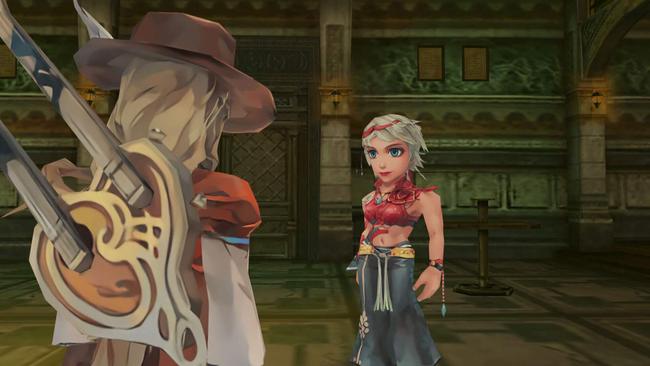
The SaGa Experience and Player Discovery
It feels weird to say out loud, almost, but the SaGa series has had something of a resurgence in recent years at Square Enix, despite it generally catering to only the most ardent genre diehards. Even Square Enix describes Minstrel Song Remastered as "the latest announcement from the ongoing SaGa Project". It can be hard to tell how much traction this 'project' is even making to begin with, but in my multiple interviews with series creator Akitoshi Kawazu and his team, it seems the various re-releases of SaGa RPGs are surpassing Square's expectations. So, we continue to see more from the franchise - including a brand new title on the way - which is good, for me.
SaGa games are RPGs developed by a Japanese studio, but they tend not to follow many of the usual conventions you'd typically expect in a "JRPG". Thus, it's somewhat difficult to explain what the games even are, let alone the appeal they hold. Most entries don't hold a high narrative focus, don't follow a linear storyline sequence of events, and aren't usually driven by their characters. That's not to say there aren't cool characters or narratives to be found in SaGa games, because there are, it's just not really the main draw in the same way that it is for its many JRPG contemporaries.
Instead, SaGa games are more systems-driven, fueled by player curiosity and willingness to explore without much guidance. I like to describe SaGa games as 'RPG playgrounds' that tend to revel in intricate gameplay and open-ended structure. They often work as a collection of ideas more than anything else, both in terms of narratives and mechanics. Kawazu once defined the unifying theme of SaGa to be "Giving players the freedom to take the game in the direction they want to take it".
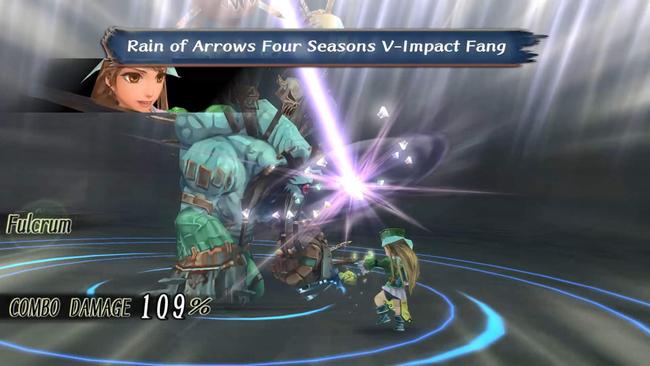
Many SaGa games are non-linear in nature, focusing on experimentation and discovery. Rather than the storyline following a deterministic path, you instead find a more vignette-style narrative through a variety of quests that you may stumble across as you explore the world, many of which are optional. You'll construct a battle party from a wide variety of characters, and then proceed to play through some of the coolest turn-based battles in the genre.
As I said in my review of SaGa Frontier Remastered, oftentimes various components in SaGa games are left vaguely explained at best, and frequently you won't be told exactly what you 'need to do' or 'how to play'. I mean this in the most generous, approving possible way. You figure things out - whether its the story or the mechanics - just by trying things, fumbling through, failing sometimes, and observing the results. You learn the game by playing it.
In my opinion, no other franchise quite offers the same sort of experience that SaGa does, due to its exploratory nature, complex systems design, and emphasis on player discovery. The best way I can describe it is that it feels as if I am discovering the world, its characters, and the story as an active participant, rather than having it told to me as a passive observer. Plus of course, the combat mechanics are often just rad on their own, and it's always extremely satisfying to slowly piece together the ultimate party to take out the numerous challenges you'll face along the way.
What is Romancing SaGa Minstrel Song?
If you don't know what the heck a "Romancing SaGa: Minstrel Song Remastered" is, here's the breakdown. Romancing SaGa was an RPG from SquareSoft originally released for the Super Famicom in 1992. However, it never saw an English-localized release at the time, despite its English Game Boy predecessors. It wasn't until 13 years later in 2005 that a full-on remake of the game would be released for PlayStation 2. This was Romancing SaGa: Minstrel Song, which did see a release in North America (though the subtitle was dropped). It took the characters and story premises of Romancing SaGa and recreated them from the ground up with 3D environments, models, and added voice acting.
So, in short, Square Enix announced a remaster of a remake.
Personally, I find much amusement in looking at the broad reaction to the announcement trailer for Romancing SaGa: Minstrel Song Remastered. Several responses on social media boil down to something along the lines of 'what the hell are those character models?'. Which I get, I really do! I also remember the exact same reactions when Minstrel Song was first released 15+ years ago, and I'm pretty sure one of those reactionaries at the time.
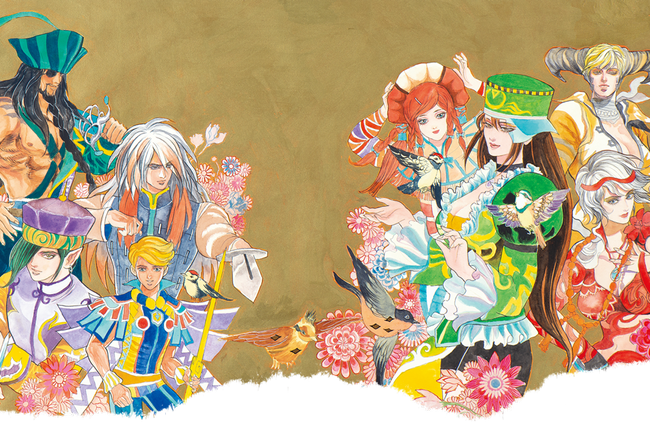
Despite the series having absolutely fabulous illustrative art by artists such as Tomomi Kobayashi, the direction decided on for the series' first 3D offering was certainly a decision. While it seems like the SaGa model stylization has been loosened up a little bit in the more recent SaGa Scarlet Grace, it's something you simply need to at least put up with, I suppose. I do wish the realization of Kobayashi's character art went into a bit more of a color-stylized direction rather than the anatomic stylization we ended up getting, but I'm still here primarily for the world and systems on display, as well as an unmatched focused on player discovery.
In Minstrel Song, you get to choose one of eight characters to start your adventure. Each character's storyline opens uniquely in different corners of the world of Mardias, with each given a different opening premise to their adventure. After the opening sequence, you are essentially left to your own devices, able to broadly explore the world in whichever direction you choose. Go to a different town nearby, talk to NPCs, discover new quests & sub-stories, and recruit new characters to your party - there's honestly quite a lot to find. While the ultimate objective is to stop the resurrection of the evil god Saruin, how you get there is largely left for the player to figure out.
Minstrel Song is another SaGa entry composed by veteran star composer Kenji Ito, who never seems to miss - in my estimation. From rocking battle tracks, to soothing town themes, and rhythmic dungeon themes, it's all great stuff.
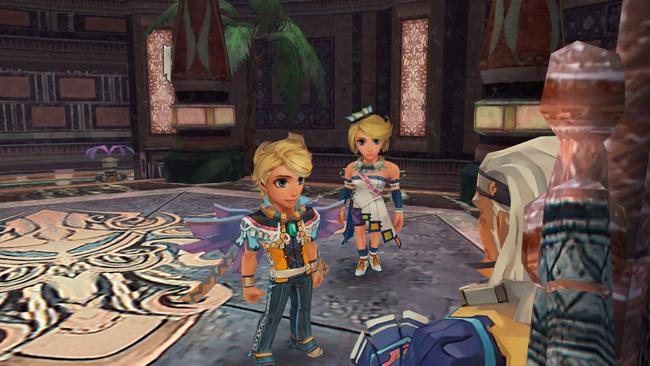
I've once heard Romancing SaGa described as "JRPG Skyrim", which to be clear I think is a bit silly, but I get where the comparison comes from! For the most part, you are free to go just about wherever you want, to do whatever you want. Which direction should you go in? Well, just pick a direction and go! You'll discover the storyline along the way.
Where the Skyrim comparison falls flat, to me, is in how intricate and cool SaGa combat systems are. On the surface, SaGa looks like any typical turn-based RPG. It's the underlying systems and progression that really set it apart, though. There are no numbered character levels or skill trees, and stats are powered up through exercised use. Square Enix loves to refer to the "Glimmer" system these games share, even though everyone who actually plays these games will call it "Sparking" instead. This is where by using certain types of abilities, you have a semi-random chance to spark a newer, better, hopefully cooler ability in the middle of battle.
In SaGa, the satisfaction of constructing a powerful party from the characters of your choosing is unmatched, with a wide level of flexibility in how you approach combat, equipment, and more. Challenges are abundant and battles are never boring. Those moments when you manage to coordinate a diverse party, discover properly powerful arrangements, and start to understand how everything can click together in your favor -- those moments of realization are exhilarating. There is substantial draw to SaGa in learning the sorts of things you are able to do in the game, once you actually understand it.
Minstrel Song has a little extra flavor here in comparison with some other SaGa titles, with certain abilities organically pairing up, leading to a variety of Combos that can be performed by the party. There are also class and crafting systems that get a bit complex to go into here, but for those who love to dive deep into party customization, it's all here.
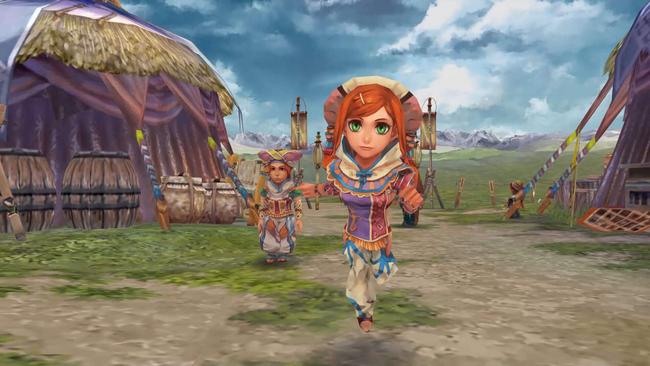
What Adjustments I Hope To See In The Remaster
Despite my adoration for Romancing SaGa: Minstrel Song, there are definitely components to it I'd like to see adjusted or tweaked. Square Enix's handling of the SaGa Frontier remaster was great, and I can only hope that we have a similar effort here.
Event Rank and Quest Availability
One of the most contentious components of Minstrel Song is how it handles its quest availability. Practically all of the content in the game - narrative or otherwise - can be found within the game's quests, and sometimes the requirements for unlocking and proceeding through various quests can become somewhat complex and intricate.
However, the main element that determines quest availability is something called Event Rank. This is a hidden global counter of sorts that broadly represents your party's progression and battle capability in the game. Many SaGa games include a similar sort of Rank - notably this sort of styling can also be found in Romancing SaGa 3, or SaGa-inspired titles like The Last Remnant. Not only do certain quests become available at certain ranks, which is completely sensible, but sometimes quests will become locked off if your rank gets too high, which is less so. This means you can permanently miss out on content simply if you spend too much time wandering and getting "too strong".
I *get* why the game was designed this way. Kawazu likely wanted to offer unique experiences from player to player and playthrough to playthrough - by having different quests more readily available depending on which character was chosen and which direction the player headed. Considering Minstrel Song's dense world and multiple protagonists, players arent *supposed* to see everything in a single playthrough, and it's technically not possible to do so anyway.
This all falls back on Kawazu's philosophy of placing focus on player discovery - essentially allowing future playthroughs of Minstrel Song to retain storylines & locations to discover as you play through with a different character.
Despite my absolute adoration for SaGa design philosophy, I feel like this quest preclusion mechanism is not really needed. This was actually one of the parts I really appreciated most about Romancing SaGa 3. It shares a very similar open-ended structure to Minstrel Song, with a variety of events the player can run into in various parts of the world, in whichever order they might stumble across them. However, unlike Minstrel Song, practically none of these events are permanently 'missable'. Sure, you may naturally 'miss' an event by happenstance if you don't know how to activate it, but you'll never be permanently barred from doing a quest for a reason as arbitrary as 'getting too strong'. So it'd be nice if Minstrel Song worked more like Romancing SaGa 3 in this regard.
It may also be nice to make Event Rank visible (as it is in games like The Last Remnant), just to make it more clear at a glance your progress made in the game. Other possible remaster additions such as an encounter toggle would also go a long way to managing Event Rank.
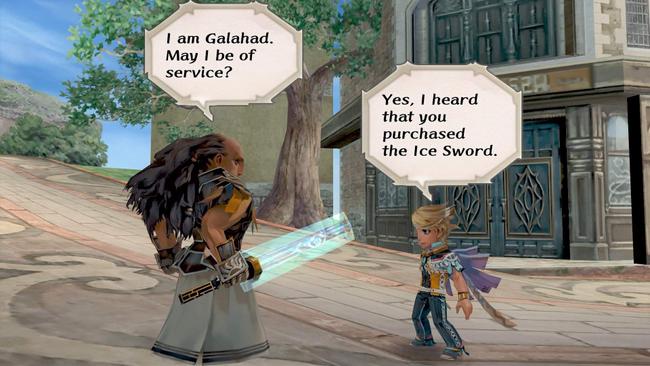
Improve Explanations & Tutorials
Despite everything I said about SaGa's penchant for self-discovery, it's not completely without guidance. The original Minstrel Song did have tutorials, of sorts. In each of the game's major towns, an NPC child from the 'Volunteer Brigade' will offer some tips and advice for a variety of components, such as proficiencies, techniques, classes, crafting, and more. This NPC was also, oddly enough, tied to the game's event rank, and the number of tutorials he would have would increase as your rank increased. However, I think the content and availability of these explainers could improve.
One of the great things about SaGa Scarlet Grace Ambitions is a really thorough set of tutorials and definitions you can access from the game's menu. I still think, inevitably, the best way to really understand SaGa's many intricate systems is to learn through playing it for yourself, but having access to these sorts of tutorials at any point is a great resource you should have, and it can help to fill in any gaps in understanding.
It's at worst a complement to what the game already exhibits, but expanding upon the game's explanation of systems can make it more approachable to played. While SaGa Frontier Remastered didn't have as thorough of a glossary as Scarlet Grace, it still added a few helpful tips to help ease in beginners - perhaps Minstrel Song can at least do the same.
Improve New Game Plus Carry-over
This is a component that many other SaGa re-releases have already implemented, so I'm hopeful similar adjustments will be made here. Minstrel Song already had a New Game Plus option, largely carrying over shop affinities, class unlocks, and some quest progression flags. However, most other components could not be carried over, such as items, equipment, and unlocked techs.
To improve replayability for the game's eight characters, it would be a great addition to at least offer a New Game Plus option with even more carryover, such as jewels (currency), items, or other stats. Keeping unlocked techs would also be a boon, even though this often nullifies the challenge of the game in subsequent runs.
I wouldn't want a more thorough New Game Plus option to be the *only option*, but considering how huge Minstrel Song is, I think it's fair to allow those who complete the game once to be able to play through the other characters without having to train up characters again from relative scratch. It also might be nice to be able to start a NG+ playthrough from any point in the game, not just after the credits.
Again, this request generally falls in line with what previous SaGa re-releases have done, so it seems likely Minstrel Song will make some adjustment here.
Tempering Tweaks
Lastly, speaking of classes and crafting, Minstrel Song has fairly complex implementations of both systems. One key component to the game is "Tempering", which allows you to improve a weapon's strength by using certain collectable materials with it. Each time a weapon is tempered, it needs to be 'broken in' before it can be tempered again, which involves using the weapon several time in battle.
This ultimately leads to weapon upgrading being a little bit of a lengthy process, as each time you want to temper it, you have to go out of your way to battle numerous times before you can upgrade it again. I think it would be beneficial for this system to be adjusted to that tempering can be done more freely.

I know whenever Minstrel Song Remastered launches, I'll be deep into it for quite a while. Even though I've played the original release already, I know there are things in the game that I have yet to experience - I never did play as all the characters, so I definitely have reason to replay. I'm looking forward to seeing new quests and trying out new characters I haven't used before, and I hope the remaster can make a cool game even better. Don't let me down, Square!
Romancing SaGa: Minstrel Song Remastered is set to release "this Winter" for PlayStation 5, PlayStation 4, Nintendo Switch, PC (Steam), and mobile devices.